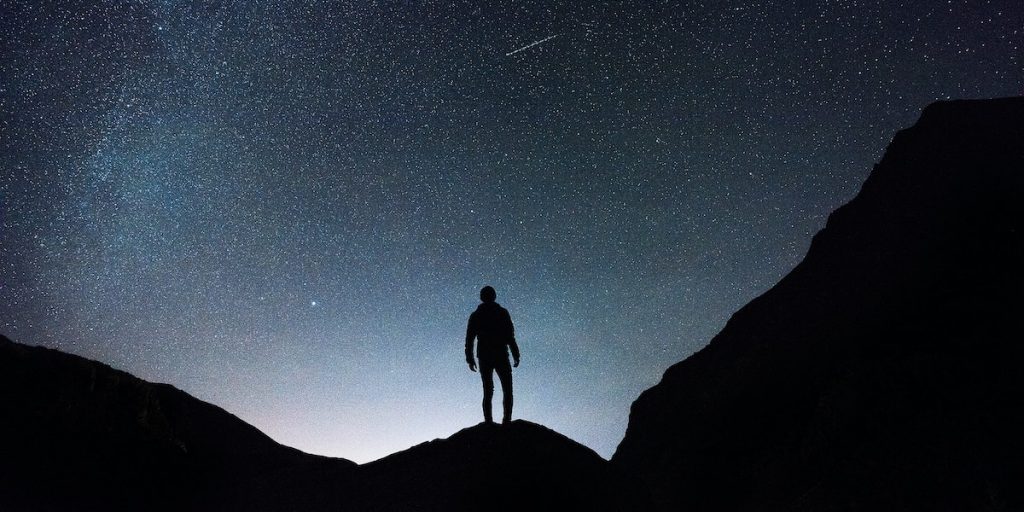READ ON TO DISCOVER:
- Why Gucci is intentionally misspelling its own name
- Why social media “filter bubbles” may be a myth
- Why the top 1% spend so much on education
Author, speaker, and researcher Elizabeth Currid-Halkett is the James Irvine Chair in Urban and Regional Planning and professor of public policy at the University of Southern California. Also based at USC, Johanna Blakley researches a wide variety of topics, including cultural diplomacy, entertainment education, celebrity culture, digital media, and fashion. The two recently sat down to discuss the surprising ways that people craft and communicate their social status, both online and in real life.
This conversation has been edited and condensed. To view the full version, click the video below.
Johanna: One reason I was so interested in your book is that you did a really great job of unpacking how complicated the process of signaling your status is. It’s not just, “I’m wealthy, so I’m going to buy expensive stuff and show it off.” It’s much more subtle than that. Could you talk a little bit about that?
Elizabeth: When I first started writing my new book, I was particularly inspired by Thorstein Veblen, who came up with the term “conspicuous consumption”—the use of material goods to show your social position. Fashion is an obvious way in which people have [always] done this, but the evolution of consumption has been the democratization of material goods, which has made them less valuable as a way to show social position. In fact, social status today has to do with what I call “inconspicuous consumption,” which is the use of different kinds of knowledge and information to acquire things.
Johanna: It’s not just what we wear—it’s also what we buy at IKEA or at Pottery Barn. We can craft a very specific aesthetic and identity, and it’s difficult to put a price on that. Our social antennae are geared toward reading between the lines and figuring out, “Do you know what it means to be a truly cool Brooklyn mom? Do you have the secret code?”
Elizabeth: Yes, absolutely. I call that code “cultural capital.” The real [issue] is, “Do you have the insider information to know what to buy?” Today, anyone can knock off some designer. H&M does a fine job of knocking off the runways, but that means that people are then looking for other ways to differentiate themselves. Then it becomes, “I bought this t-shirt because it’s organic cotton, and it was made in Brooklyn. You can’t tell because it just looks like a t-shirt, but I can tell, and that makes me feel like I’m representing myself in a way that’s different from everyone else.”

Trending: How to Transform Daily Habits into Life-Changing Rituals
Johanna: There’s a natural discursive quality about that—it becomes a narrative, a story you tell. Remember how I showed you that super plain gray sweater I have? I got it in a swag bag at a TED conference, but inside it had something called a “baa code” that would geolocate the sheep that provided the wool for my sweater. It becomes this conversation about my love of animals, and that I want brands to act in an ethical way, and have accountability.
Elizabeth: Totally. I talk about the term “conspicuous production,” this idea that we want to know where something comes from—the origin is part of its value and status. We buy the $5 cup of coffee at Intelligentsia because we know that Intelligentsia communicates directly with their farmers. That becomes part of the value, even though it’s just a cup of coffee. It’s the same thing with your sweater—which I still covet.
How does this play out on social media?
Johanna: I think we’ve become so spoiled with these platforms that those of us who were around before they existed have forgotten how isolated we were, and how hard it was to maintain contact with people who didn’t live in your town.
I go to a lot of conferences around the world. I meet these amazing people, and it used to be tinged with sadness that I’d never see them again. It’s too hard to have an email correspondence with every cool person you meet, but I can stay in contact with them on Facebook, on Twitter, on Instagram. It frustrates me to no end that if you picked up any newspaper within the last year and a half, you would see all of these complaints about how social media is destroying humanity and alienating us—I believe it’s actually the complete opposite.
Elizabeth: It strikes me that there are two things that go on with social media in the context of self-representation and status. One is that people find people like themselves—so you could be in a small town in West Virginia and [still] find a whole world out there that you may not find at your doorstep. To me, that’s a huge plus. Another huge plus is the connectivity between cultural capital and the sharing of knowledge. But on the other hand, we get into these little bubbles of people who are like us—who have the same fashion interests, who have the same experiences, who can pick up on the meaning of our experiences.
“If you picked up any newspaper within the last year and a half, you would see all of these complaints about how social media is destroying humanity and alienating us—I believe it’s actually the complete opposite.”
Johanna: Our human instinct is to find people online—just as we do in real life—who like us, appreciate what we have to offer, and have information that we want. That’s why you see so many fan communities online. It’s especially of service to people who live in rural America, or where you don’t have access to a lot of libraries and films. I was one of those people—I lived in a very small town in rural Oregon, and the internet would have completely changed my life. Social media would have been incredibly gratifying.
I’m critical of the arguments about the rigidity of filter bubbles, where we [allegedly] surround ourselves with people who think what we think, and never hear anything else. I mean, people are always outraged about what they see on social media. It’s like, “Wow, your filter bubble is not working very well.”
I’ve done some research on recommendation engines—Spotify’s suggestions to you, Amazon’s suggestions to you, YouTube telling you the next video you ought to watch. Those algorithms, which cost tens of millions, sometimes hundreds of millions of dollars to create, are trying to nudge people out of their filter bubbles. They’re trying to get them to consume more products in different categories, because that makes us better consumers for them.
That slowly but surely makes us all a bit more global, a bit more cosmopolitan, a bit less stuck in whatever rut we might have been in if we only met people in our hometown and only saw things on three television channels.
Elizabeth: Let’s take this analog, because we’re seeing these divisions right now between the coastal elites and the states in the middle of America. One of my central concerns is that I think status today is about cultural capital, which is not material. One alarming stat is that over the last 20 years, the top 1% has increased their spending on education to 6% of their total expenditures. The middle class is spending less than 1%, and they always have.
That speaks volumes. That’s not a handbag—that’s the passing on of privilege, and a passing on of knowledge and of social networks and cultural capital that I don’t think any amount of Facebook or Instagram can solve. I do believe that social media can help close those gaps—the question I have is, how?
“These tiny tweaks show how much you are on the frontier of your social position.”
Johanna: I am optimistic about that possibility; people can step out of their physical confines in order to discover new perspectives, new kinds of people, new knowledge. That’s one reason I love Twitter, for instance—the radical serendipity there. I’m confronted with stuff that I never would have thought of, that none of my relatives or friends would have mentioned in my Facebook feed.
That is very powerful, and imagine if it were an immersive technology—not just a text tweet with a picture or link to a video, but a full-fledged three-dimensional avatar, a person who is [speaking]. Maybe it’s the person who authored the article, or it’s the person who’s sharing it, and that interaction feels very real. Imagine how differently we would be having this conversation if we truly had access to that kind of immersive digital world.
Trending: 5 Reasons Life Gets Better After Your 40s
Elizabeth: As we think about what we read online and how we attain knowledge, [it’s worth noting] that a lot of it has a paywall. You scroll through your Twitter and there’s some Economist link, and you’re like, “Oh, that sounds like a really interesting article!” But if you don’t have a subscription to The Economist, you can’t read it. It’s the same thing with the Wall Street Journal and the New York Times. I think that social media could work closely with the media to give more access to information that actually closes the [social] gaps.
Shifting gears back to fashion, I found through my research that the revealing of one’s social position through material goods has become more subtle. When I was writing my book, the almond latte was like the signature drink of what I call the “aspirational class.”
Johanna: Now it’s turmeric.
Elizabeth: Or oat milk! These tiny tweaks show how much you are on the frontier of your social position. And we see this a lot in fashion because the broad brushstrokes of status are so easy to attain—the fancy handbag, the cool clothes that can be knocked off. So it feels to me that we have a much more labor-intensive approach to self-representation today.
“Irony is such a key aspect of every single fashion purchase.”
Johanna: I think because of social media and all these digital platforms that we’re using to communicate our identity, we become much more self-aware about self-presentation. That has made all the dynamics a bit more complex, and it has introduced the possibility of irony. Irony is such a key aspect of every single fashion purchase—you’re always asking yourself, “Is she doing that on purpose? Is she doing it ironically?”
Elizabeth: The rise of the hipster.
Johanna: Exactly. I just read about Balenciaga making a several thousand-dollar IKEA bag. It’s a big blue bag just like the IKEA bag, but it’s Balenciaga. I mean, that’s hilarious—there’s a sense of humor there.
Elizabeth: Very expensive hilarity though.
Trending: 5 Simple Strategies for Persuading Anybody
Johanna: Yes, and it’s interesting to see the ways in which luxury designers are still trying to be the cool kids by sometimes knocking off the knockoff artists. Gucci is releasing some stuff that has an alternate logo on it, G-U-C-C-Y, and now the knockoff brand may actually try to sue Gucci. It becomes this hall of mirrors.
Elizabeth: Absolutely, and people pay such a premium for otherwise ordinary objects, like $80 for ripped-up jeans.
Johanna: Yeah, and you have to have the knowledge to unpack that curated self-presentation. You’re in on the joke if you get that those ripped pants look like they could be on a homeless person, but are on a person who makes $800,000 a year.
“Curiosity is such a beautiful thing, and its killer app is the internet.”
Elizabeth: Knowledge and information drive so much of consumption and self-representation today. We moved from a manufacturing economy to an economy that was driven by knowledge workers, and that premium on knowledge and information persists in all facets of our lives. Think about the way we use our leisure time; we go to Pilates, or we meditate, or we listen to a podcast—it’s all a lot of work. People would be ashamed to say, “Actually, I thumbed through a celebrity tabloid and drank an iced tea.” That’s not okay anymore.
This gets to the crux of where we are in society: How do we use this knowledge, this cultural capital, to make society better—either in everyday life or on social media?
Johanna: I think sharing knowledge and making human connections is still incredibly important. We have an ancient instinct to just keep that knowledge within our tribe, within our family, to make sure that we succeed and that our kids are better off. So we need to share that more broadly, to communicate with people beyond those who agree with everything that we already understand to be true, to engage in conversation and be curious. Curiosity is such a beautiful thing, and its killer app is the internet.
Elizabeth: I think that’s really well said. You see all this inequality—what do we do about it? My initial answer is to provide more access to cultural capital. We [should] have more libraries, reduce these paywalls, and figure out ways for people to access music lessons and information and education.
We are in a moment when this country feels very culturally divided, and a first step to closing that [gap] is understanding each other. Social media could be tremendously powerful in helping people from all across the country say, “Hey, maybe you’re not so different from me.”



























